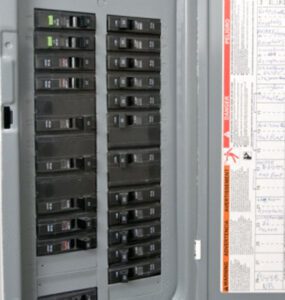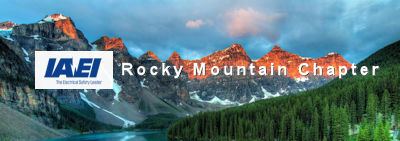Circuit Breakers and Fused Switches
Circuit Breakers and Fused Switches
Did you know…
Did you know that there are restrictions to where you can install circuit breakers and fused switches? Those restrictions can be found in article 240.24(A) through (F) of the 2020 NEC. Circuit breakers and fused switches are called overcurrent devices. They need to be readily accessible and installed so the center grip of the operating handle is not more than 6 feet 7 inches above the floor or working platform when it is in the highest position unless the device is for busways (as provided in 368.17(C), supplementary overcurrent protection (described in 240.10), overcurrent devices described in 225.40 and 230.92, or where adjacent to the utilization equipment they supply, the access can be portable like a ladder. There is an exception, found in 240.24, that allows a tool to be used where they are installed within listed industrial control panels or similar enclosures. Regardless of the location, the working clearances of 110.26 would still apply.
Ready Access
 All occupants need to have ready access to all overcurrent devices that supply power to conductors in that occupancy unless permitted by 240.24(B)(1) and (B)(2). Where service and maintenance for electrical are provided continuously by the building management, the service and/or feeder overcurrent devices supplying more than one occupancy are permitted to be accessible only to authorized personnel. An example would be in multiple-occupancy buildings and guest rooms or guest suites. Where service and maintenance for electrical are provided continuously under building management supervision, the branch circuit overcurrent devices for guest rooms or suites WITHOUT permanent provisions for cooking shall be permitted to be accessible only to authorized personnel.
All occupants need to have ready access to all overcurrent devices that supply power to conductors in that occupancy unless permitted by 240.24(B)(1) and (B)(2). Where service and maintenance for electrical are provided continuously by the building management, the service and/or feeder overcurrent devices supplying more than one occupancy are permitted to be accessible only to authorized personnel. An example would be in multiple-occupancy buildings and guest rooms or guest suites. Where service and maintenance for electrical are provided continuously under building management supervision, the branch circuit overcurrent devices for guest rooms or suites WITHOUT permanent provisions for cooking shall be permitted to be accessible only to authorized personnel.
Where Overcurrent Devices Cannot be Installed
Overcurrent devices cannot be installed where they are subject to physical damage. There is an informational note here that directs you to 110.11 concerning deteriorating agents.
Overcurrent devices cannot be installed near easily ignitable materials like in clothes closets. This would also include linen storage closets and the like.
Overcurrent devices cannot be installed in bathrooms of dwelling units, dormitory units and guest rooms or guest suites (other than supplementary protection).
Overcurrent devices cannot be installed above the steps of stairways. This use to be a regular practice but was found to be hazardous to those needing access.
You might come across panelboards that were installed under a previous edition of the NEC in areas like bathrooms, clothes closets and over the steps of stairways. You should always consult your local AHJ to determine if you can install new overcurrent devices in these panelboards.

